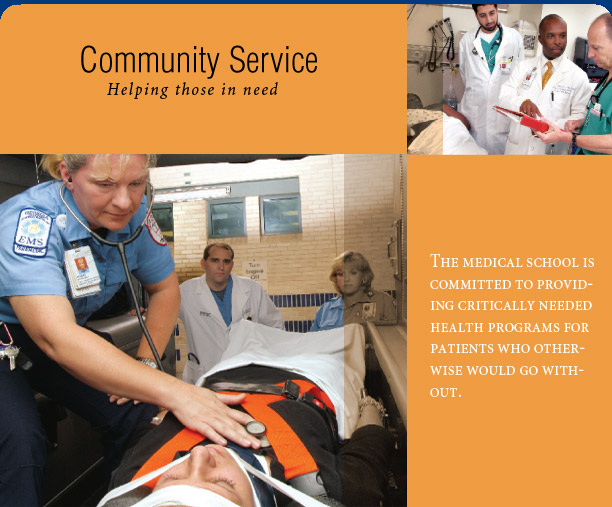
In 2005-2006, physicians at The Emory Clinic, Emory University Hospital, Emory Crawford Long Hospital, Emory Children's Center, and Wesley Woods Center provided almost $71 million in charity care, a 7% increase over the previous year. This includes indigent care provided to patients without resources or health insurance, even Medicaid/Medicare, and catastrophic care provided to patients who may have some coverage but for whom paying health care bills would be a life-shattering hardship.
The hundreds of physicians practicing in Emory's affiliated hospitals (Children's Healthcare of Atlanta at Egleston, Grady Memorial Hospital, and Veterans Affairs Medical Center) also provided millions of dollars in unreimbursed care. Such care is essential to the medical school's commitment to maintaining critically needed health programs for patients of all ages who otherwise would go without—but it doesn't pay very well.
For example, Emory medical faculty and residents make up 85% of physicians at Grady Memorial Hospital, whose mission includes providing care to the uninsured citizens of Atlanta's Fulton and DeKalb counties. (Emory shares Grady coverage with faculty and residents at Morehouse School of Medicine.) Grady struggles to keep up with growing numbers of the uninsured, while its budget remains flat. The uncompensated care provided by Emory medical school physicians at Grady Hospital totaled $24.7 million during fiscal year 2005-2006, up $2.7 million from the previous year. When Emory physicians do receive reimbursement for services to Grady patients who have coverage, these funds are invested back into Grady via the Emory Medical Care Foundation (EMCF). In fiscal year 2005-2006, the EMCF provided $35.1 million to improve services at Grady.
Thanks to Emory physicians, patients seen at Grady receive extraordinary care and can benefit from numerous efforts designed to meet the changing needs of society, including diabetes and pregnancy care programs for Spanish-speaking patients and an international clinic able to handle problems of newly arrived immigrants.
Grady's Infectious Disease Program (IDP), established by Emory physicians in the mid-1980s, was selected by the University HealthSystem Consortium as one of the nation's top three HIV/AIDS outpatient clinics. The IDP served more than 4,000 men, women, adolescents, and children last year, a high figure even for a major city.
| Next
chapter: Extra - Hospitals and Clinics >> |

Copyright
© Emory University, 2006. All rights reserved